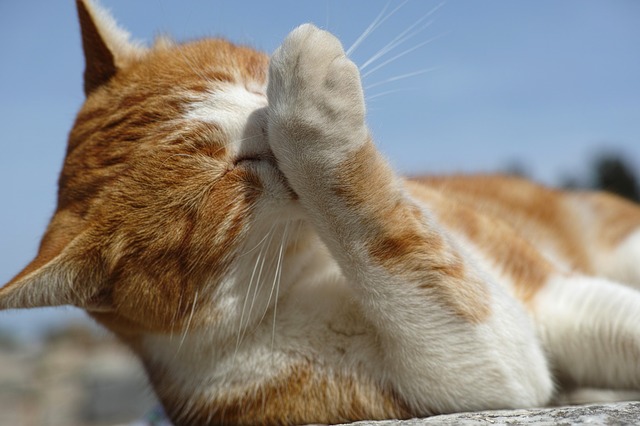Most of us spend countless hours petting our feline friends admiring their beauty but not a whole lot of us understand the anatomy of their bodies. Perhaps you only know that your kitty has a cute face with facial features, paws used to walk, a tail, and the middle section. However, if someone walked up to you and asked you if you know how the leg is really like on the inside, you would have no clue. Yet, having this information helps you understand your feline friend better so you can better take care of her. In this guide, we zoom in on a cat’s legs and we will tell you 20 things you didn’t know about its anatomy.
The Overview
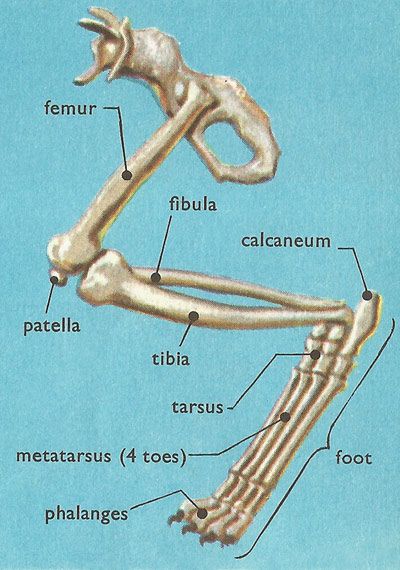
- The anatomy of a cat’s leg is quite fascinating. The leg consists of the femur or thigh bone that attaches to the rest of the body, the patella or knee joint, the fibula and tibia – two bones below the knee, and the foot (tarsus and calcaneum bones), toes, and phalanges. The knee is located high up at the same level as the stomach.
- In total, your kitty has 250 bones in his body. These are grouped into three groups: the appendicular or limb bones, splanchnic (bones in the softest part of the body (in a cat that’s the penis)), and axial skeleton (limbs of the spine, skull, sternum, and ribs). The leg bones are the longest to give the kitty the ability to leap and run fast.
- It takes more than mere bones for your kitty to move. Overlying the skeleton is a complex array of 517 muscles that give the pet his graceful and powerful movement and an awesome body shape. It is also what lets him leap five times his height, land safely, and keep his balance.
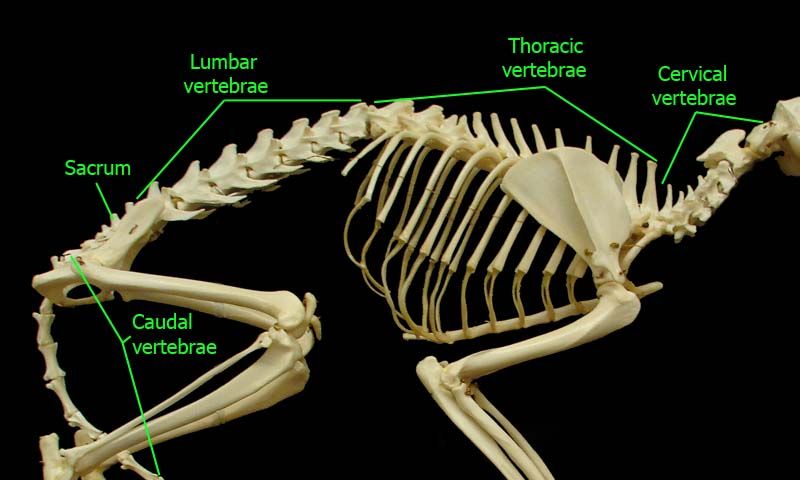
- The feline vertebra is supported by muscles – not ligaments as is the case with humans. If you’ve ever wondered why your pet is elastic and can easily contract and elongate, this is why. He can contract his back by curving it in an upward direction or oscillate it along the vertebral line.
- A cat, like a dog, is a digitigrade animal which means the weight of his body rests on the tips of his toes as he walks. Humans walk on heels and the balls of their feet. So, when you look at your kitty as they walk, what appears to be the last segment of the limb is actually the foot.
- A kitty’s skeletal system is one of the most unique. The collarbone is practically non-existent. Instead, a cat has a super flexible backbone consisting of 30 vertebrae. This is another reason he lands on his feet without any issues.
- The hind limbs are longer than the front limbs to give the cat the ability to run fast and leap over very high places. The back leg can absorb more shock and force compared to the front legs.
- Unlike human hands, cat forelimbs are joined to the shoulder by floating clavicle bones which lets them pass through any space that fits their heads.
- The back limbs only move in forward and backward directions. They allow your kitty to pounce and spring with relative ease.
- The front limbs, on the other hand, can move forward and backward as well as rotate slightly so that the paws’ underside can face the direction of the face. This gives the cat a chance to wash and clean effectively.
- An adult cat walks in a precise style referred to as the “four-beat gait”. This is where each footsteps on a spot at different times. If you watch your cat closely as he walks, you will realize that his right feet copy the position of the left feet. This special type of locomotion gives all four paws a sense of touch to give precise coordination.
Paws
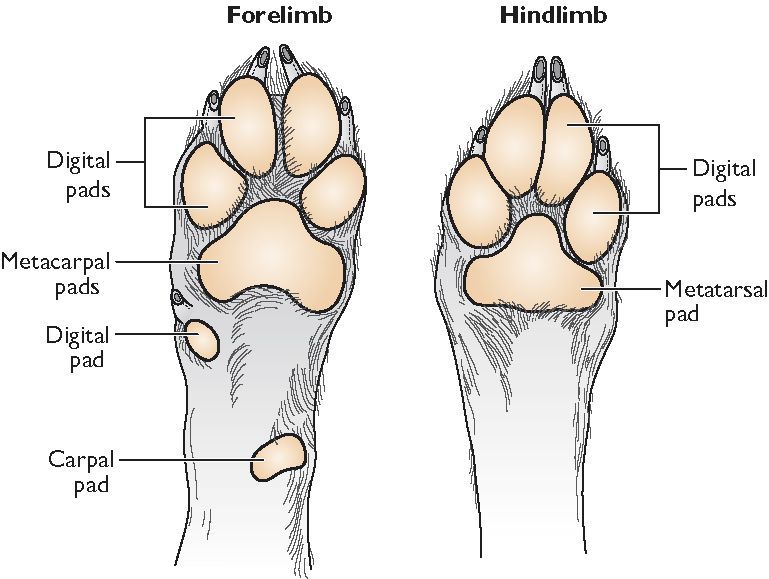
- The paw is a thin pigmented skin with an overlay of nerve endings, blood vessels, connective tissue, and fatty tissue. All work together to offer balance, shock absorption, insulation, cushioning, and tactile formation.
- Each paw has four digital pads also called toe beans. Together with the larger metatarsal (hind leg pad) and metacarpal (front leg pad), they support the weight of the cat. The carpal pad behind each front limb doesn’t necessarily hold the weight of the animal but offers traction during high jumps or moving down a hill.
- A cat’s paw has good blood circulation – much better than humans. Because of this, it can withstand a cold climate including snow well. Of course, the skin can have frostbite if the feline is exposed to the cold weather for too long.
- Sweat glands in between a cat’s toes secret a special scent used for territory marking. As your kitty scratches on something, he will leave some of the scents there to claim it as his own. The sweat glands also help him to regulate his body temperature.
Claws
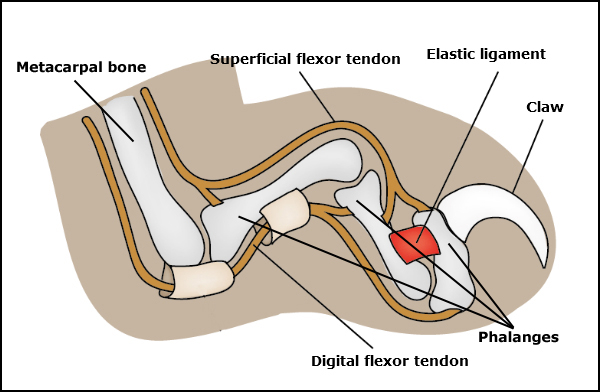
Source: Fascinating animals
- The number of claws on your cat’s paws depends on the number of toes on his paws. If he has 18 toes, it means he will have 18 claws. The function of these curling nail-like body parts is catching and grasping onto stuff. The claws also make your pet the amazing climber she is.
- Unfortunately, the claws only curl in one direction and make moving down a tree somewhat of a challenge. This is why you will see your pet shimmying backward when climbing down a tree.
- Cats also use their claws to boost their wellbeing including self-defense, scratching, and gain traction on the move.
Toes
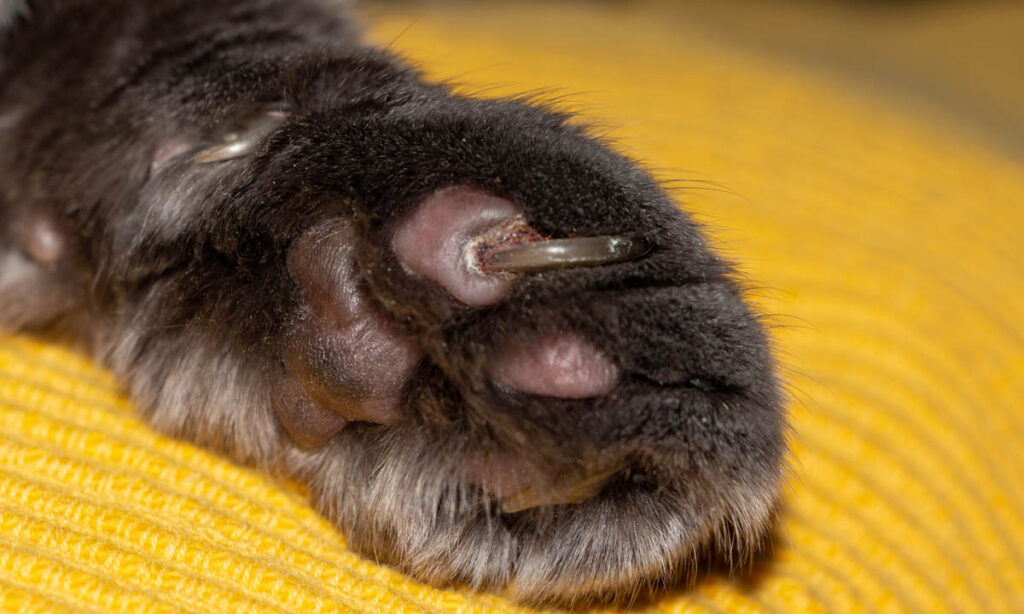
- Your adorable kitty has a total of 18 toes. The front paws each boasts 4 toes and one declaw while the back paws each have 4 toes. Some have a declaw which is more like an inner toe that doesn’t necessarily touch the round as the cat walks or runs.
- While most cats have 18 toes, some have more than that. Often, the extra toes appear on the front paws with such kitties being referred to as polydactyl cats. The extra toes can cause a host of problems to the kitty. As the dog walks around, the claws are not filed or trimmed naturally and can get stuck on carpets, rugs, and bushes and may cause a bad injury to the cat.
What goes on inside your cat’s body is much more complex and mesmerizing. His leg is specially designed with a network of muscles, bones, and ligaments to give him the ability to balance his body, walk gracefully, chase after pray, climb trees, you name it. As a cat owner, it is in your best interest to know every part of your pet.
Related Posts:
18 Cat Claws Anatomy Facts for Beginners
12 Awesome Cats with Long Legs
Cat Breeds with Tufts of Fur between Toes
Normal Cat Paw Vs Polydactyl—A Complete Guide To Your Kitty’s Paws
20 Tools and Resources You Need to Care for Three-Legged Cats

Hi! I am Eleanor Price. I started this website after my cat, Louie, almost died from a case of botulism (a type of food poisoning often caused by bacteria that grow on food items). Turned out that my cat’s diet was the problem. I have made it my duty to provide the best information and recommendations about everything cat lovers need to know about their felines’ health and wellbeing. My goal is to find the most informative content on anything feline-related and share it with fellow hardworking kitty lovers.

